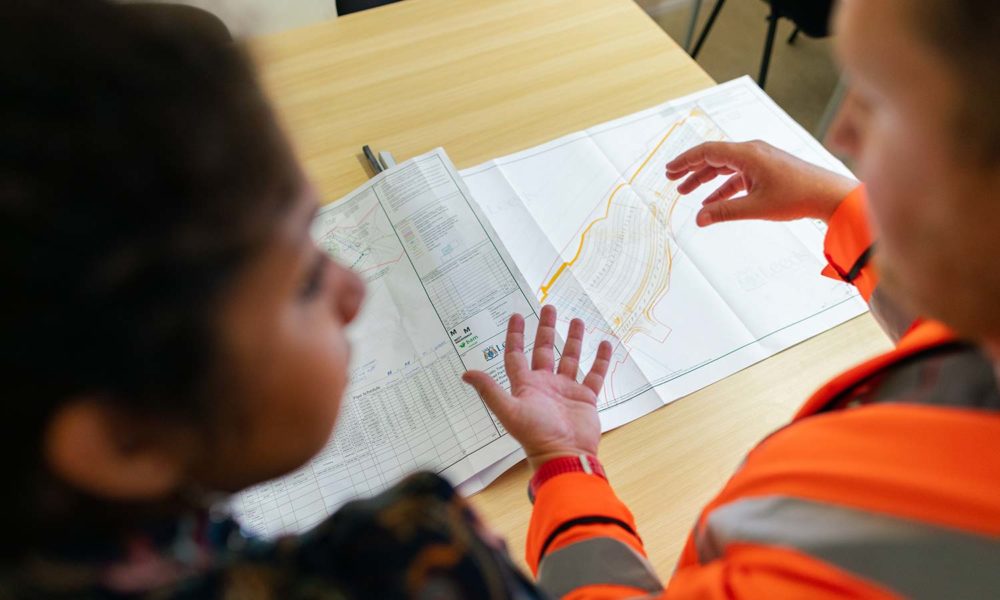With climate change here and getting worse, we must adapt our lives to live with it. One change we must make is how we account for climate change in infrastructure projects. When we fail to appropriately consider climate change in the design and maintenance of infrastructure the results are not pretty: dams break, the power goes out, roads and bridges flood, and groundwater wells dry up.
In California, this year’s fires have seared into our collective consciousness what it means to live in a changing climate. California suffered from five of the six largest wildfires in history this year, and the pall of smoky skies that follows the flames. These past two months are a bolded, ALL-CAPS warning to Californians that we need to prepare ourselves for relentless and unforgiving climate catastrophes starting now. While there is no single response that can adequately prepare us, I am pleased to share that UCS-sponsored legislation was recently signed into law to help California prepare state infrastructure projects to withstand the ravages of climate change.
Climate change is here, and it’s not going away
Wildfire is one of the biggest threats to California from climate change, and it can directly harm transmission lines and transformers on the power grid, and dump ash and eroded sediment in reservoirs and dams. Yet wildfire is hardly the only threat California faces. Extreme heat, an important ingredient to massive wildfires, is a killer in its own right. This August was California’s hottest August on record, with Death Valley recording 130 degrees on August 16, possibly the hottest temperature recorded in world history. However, rather than the warmest in history, this past August is more usefully thought of as one of the coolest Augusts we will experience over the rest of this century. UCS research has found that without changes to the world’s emissions trajectory, extreme heat is expected to grow significantly in California. For example, Fresno, could experience 14 days a year with a heat index at or above 127 degrees, and balmy, un-airconditioned San Francisco-Oakland could experience a month of temperatures over 90 degrees. In addition to increasing wildfire risk, extreme heat can buckle roadways and railroad tracks, increase electricity use and reduce the efficiency of power lines.
During California’s winter months we expect to be buffeted between extremes in precipitation. In some years storms and flooding will overwhelm our water systems and damage roads, and in other years extremely dry conditions will strain the state’s water supply and leave a parched landscape by summertime that furthers fire risk. And, lest we forget, rising sea levels along California’s coastline also will require many communities to grapple with high-tide flooding within the next few decades, threatening roads, bridges, water treatment plants, power plants and substations.
Climate-safe infrastructure is designed for a changing climate
Few people think very much about infrastructure. When roads, power lines, and water systems work, we tend to take it for granted. But when they fail, the loss is immediately apparent and sometimes hugely harmful to human life. As the impacts of climate change become more perilous, we must build infrastructure that can keep up with a changing climate. That is the essence of “climate-safe” infrastructure.
UCS has been working to advance climate-safe infrastructure in California for several years. In 2016, we worked with Assembly Member Bill Quirk to pass legislation (AB 2800) that created a Climate Safe Infrastructure Working Group and enshrined in law a requirement that state agencies consider climate change when designing, building and maintaining infrastructure. The working group brought together engineers and state agency staff with climate scientists and practitioners to help engineers better incorporate climate change science in infrastructure design and overcome the challenge of planning long-lived infrastructure projects in the face of inherently uncertain climate projections. The Working Group’s final report, Paying it Forward: The Path Toward Climate-Safe Infrastructure in California, laid out wide ranging recommendations for creating safer infrastructure for our communities.
This year UCS again partnered with Assembly Member Quirk. AB 2800 (same bill number!) and prevented the Working Group and the requirements on state agencies from sunsetting in statute. In addition, the new law requires state agencies to assess the economic damages and financial liabilities of climate change when assessing future infrastructure needs. All of this is so critical because most infrastructure projects, from bridges to high-voltage power lines, are hefty investments and are supposed to last for decades into the future—a future we know will be very different from the present.
The work ahead
With the many crises we face in 2020, it’s easy to become overwhelmed by the sheer scale of our challenges. However, in my best moments, I have found myself returning to focus on what I can actually control. That mindset – a focus on what we can control – is in many ways the foundation of climate adaptation and resilience planning. While California cannot single-handedly turn the tide of global climate emissions, we are in complete control in how we respond to the changes we are witnessing and demonstrating to the world what can be accomplished.
Fortunately, there is interest among some California state agencies to embrace climate-safe infrastructure, but there is not yet technical expertise across all of state government to interpret and utilize climate science, and then incorporate that information into infrastructure projects accordingly. I hope that AB 2800 will continue to improve infrastructure planning, design, and operations by better integrating the most recent science and experts’ best recommendations into decision-making.
Any state or locality that is looking to advance a vision of climate-safe infrastructure would be well-served by the following policy goals:
- Resilient design – Require government-funded infrastructure to be designed to withstand the future impacts of climate change (included in AB 2800).
- Expert input – Create an advisory body of scientists, engineers and other experts to provide guidance for how to operationalize climate science in infrastructure decision-making (included in AB 2800).
- Prioritize equity – Engage underserved and vulnerable populations, and prioritize infrastructure investments and technical assistance in underserved communities to begin addressing historic disinvestment and disproportionate vulnerabilities to climate impacts.
- Data and tools – Invest in data and tools to help understand and address costs and risks of climate change to infrastructure.
- Local support – Increase support for technical assistance to regional and local governments.
- Adequate funding – Provide funding for investments in climate-safe infrastructure.
- Integrated solutions – Prioritize integrated solutions across sectors, jurisdictions, and climate impacts, and furthers reductions in greenhouse gas emissions.
We must marry what the science indicates we are likely to face in future decades with engineering and design decisions about where, what, and how to build. If we don’t, then climate change will leave our families and communities even more exposed to the harsh reality in store for us.

